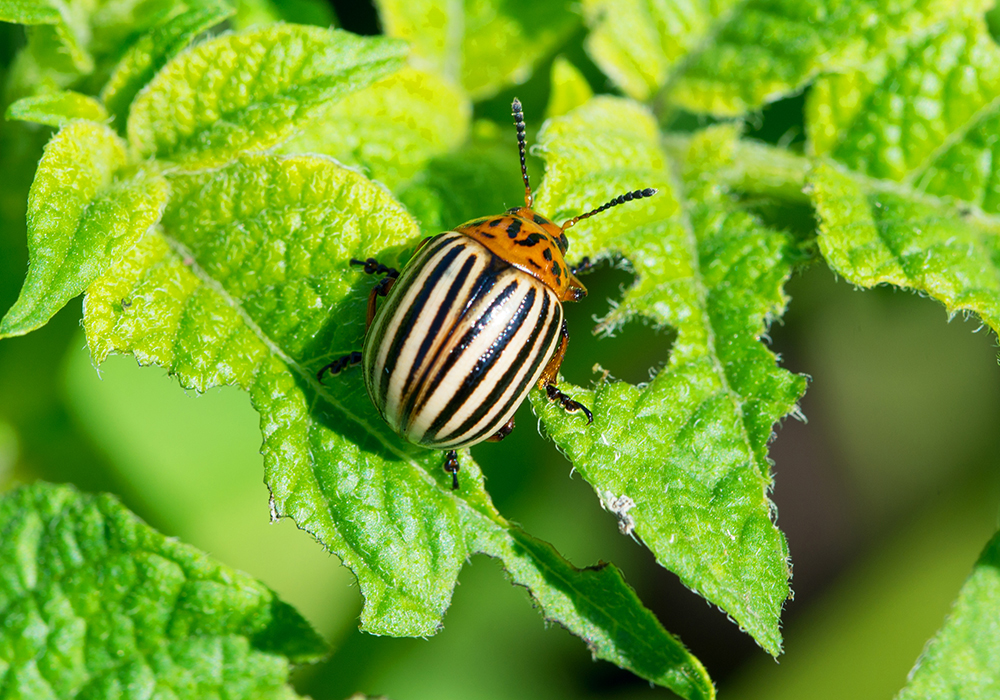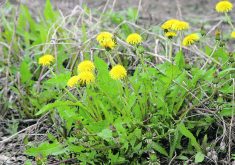The federal government has given the green light to start field trials for a new type of biopesticide that may become an effective deterrent against pests without the side effects of traditional pesticides.
The federal government’s Pest Management Regulatory Agency is allowing Renaissance BioScience’s novel RNAi biopesticide technology to be tested in Canada this summer to tackle the Colorado potato beetle.
Renaissance’s chief strategy officer, John Husnik, said the basis of the biopesticide is to target the potato beetle by creating an RNA-based, baker’s-yeast-hosted delivery system, which will affect insects on a cellular level and ultimately kill them.
Read Also

Using artificial intelligence in agriculture starts with the right data
Good data is critical as the agriculture sector increasingly adopts new AI technology to drive efficiency, sustainability and trust across all levels of the value chain.
Husnik said Renaissance’s product is not a traditional microbial biopesticide.
“If it was a microbial, it would be alive and the microbe itself would be on the plant,” he said. But in this case, “the microbe, which is yeast, is manufacturing the active ingredient but then we inactivate and kill the micro-organism.….The carrier itself would be a dead yeast — completely intact but dead.”
The remaining RNA molecule doesn’t last for an extensive time but long enough not to require reapplication every few days.
While an understanding of messenger RNA’s (mRNA) role has been around for decades, the “i” portion in RNAi is a relatively new concept, explained Husnik.
“‘I’ stands for interference and that’s basically interfering with that information flow,” he said, noting the product is double-stranded RNA. “We’re hijacking a system which is quite primordial, especially from an immune point of view but it’s very prominent in insects.”
Insect physiology will treat the double-stranded RNA as a virus, and in the case of the potato beetle specifically, it will target essential functions contained in its DNA based on its genome sequence.
“We trick its own immune system inside the insect to think, here is this double-stranded RNA and here is the exact sequence, anything that looks like this, go destroy it,” said Husnik. “It will therefore target its own mRNA that it needs in order to make that protein that is essential for life.”
Because the product targets the specific DNA sequence of a specific pest, Husnik said a biopesticide such as this could be used for other insects while having no impact on any other.
“It’s got all the hallmarks of a really very specific and excellent biopesticide because we are targeting just that insect using a molecule that can degrade quite quickly,” he said.
Initial testing of the product has shown no special equipment outside commonly used sprayers would be needed for application.
Husnik didn’t shy away from addressing some of the issues about using bio-molecular technology in such a manner, stating RNA is present in everything people eat.
“It’s part of every cell, in every food from meat to plant matter,” he said. “In this case, this minute amount — almost like an invisible layer of a foliar application for Colorado potato beetle — the RNA is mixed in with the yeast RNA.”
Husnik acknowledged this could be a concern but added that unlike an mRNA human vaccine, this product is not being injected and doesn’t target a human-borne virus.
“That’s a whole other world,” he said.
Husnik said if initial testing of the product goes well, it could be commercially available within the next few years.
















